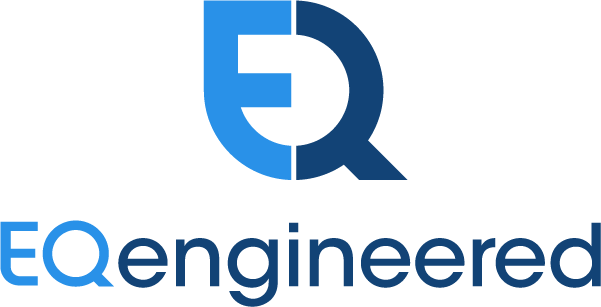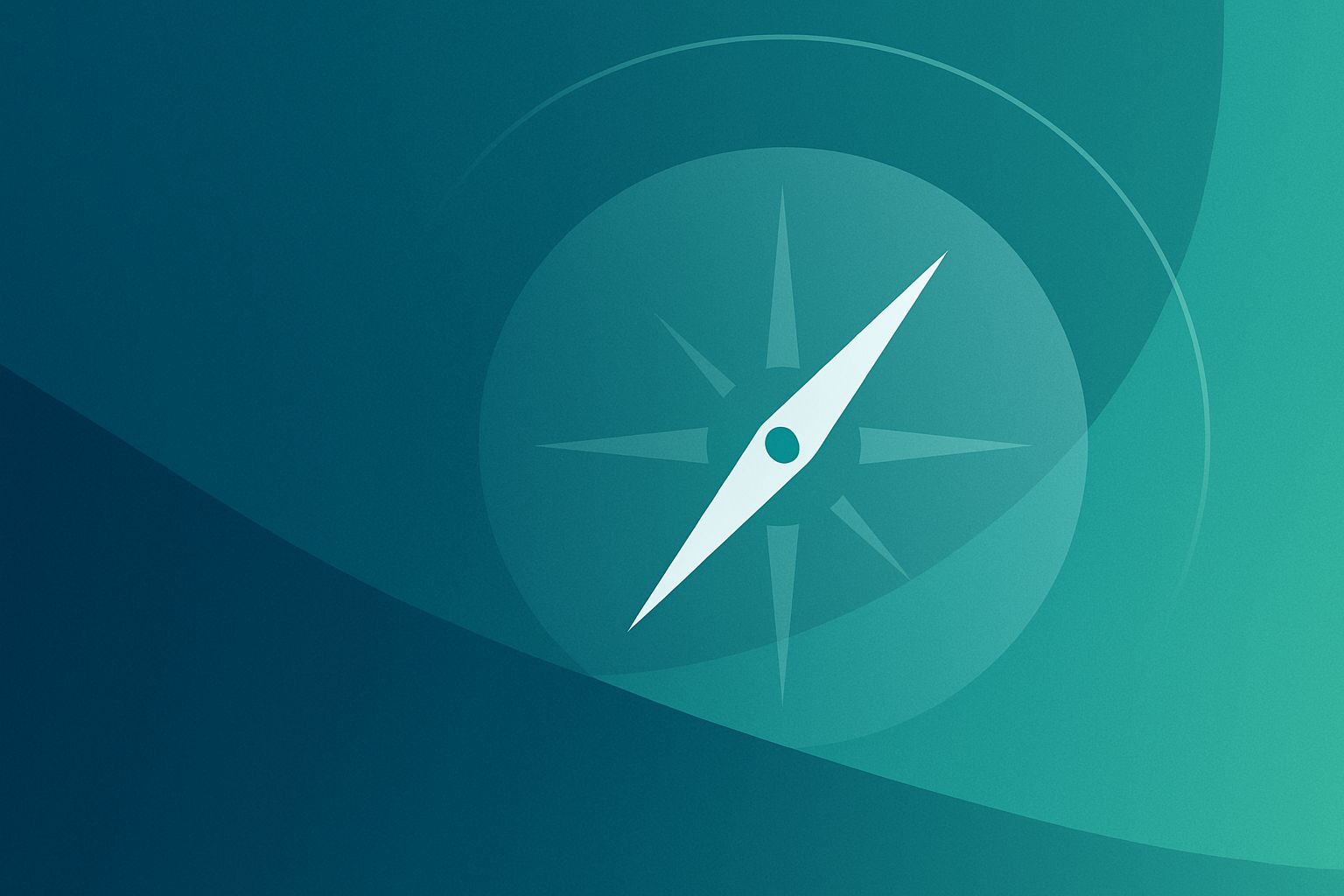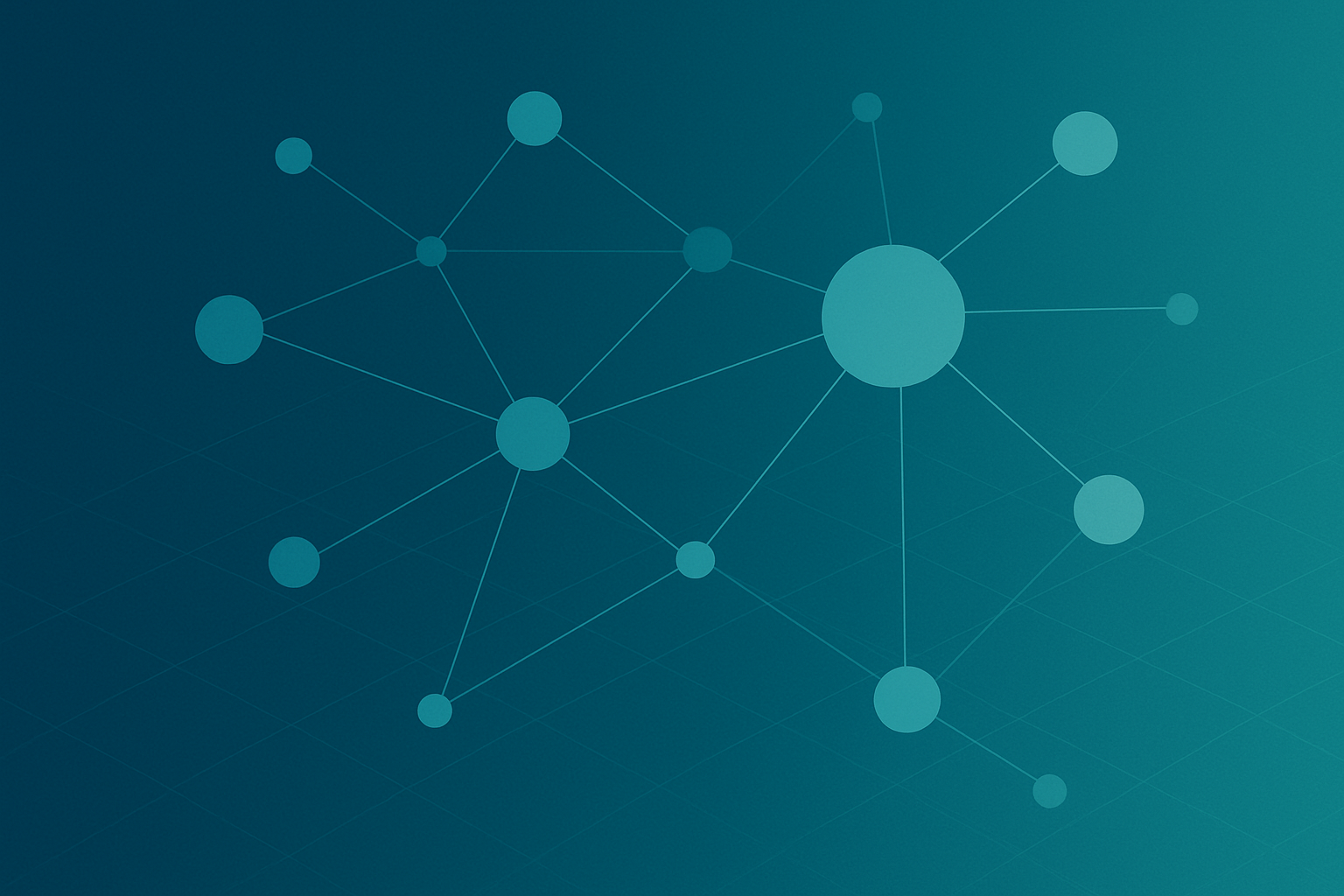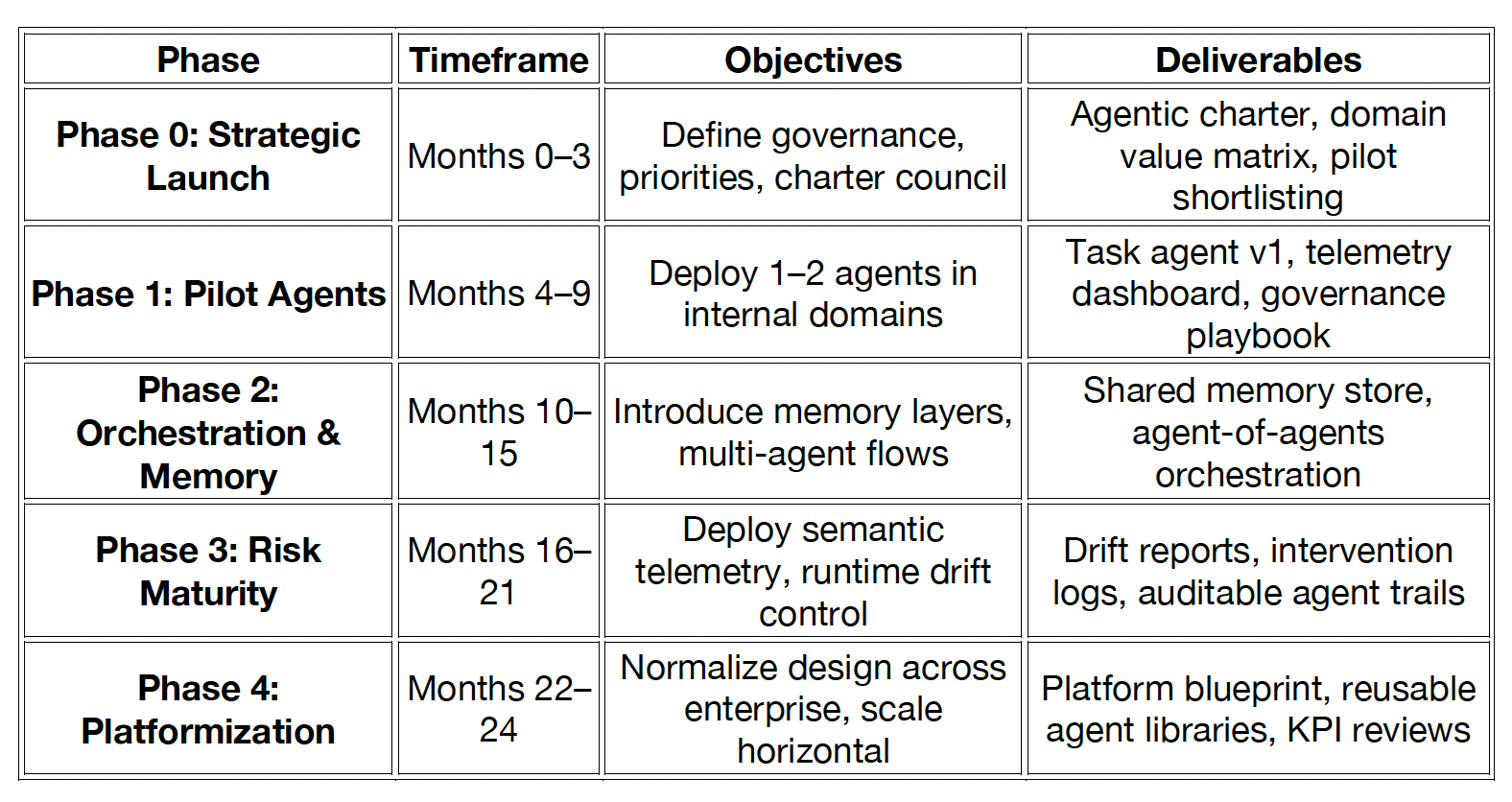2026 Green Paper: Agentic AI as a Strategic Imperative by Mark Hewitt
Introduction
The digital enterprise of the past decade has evolved through successive waves of transformation, each driven by advances in technology, data, and organizational capability. From digitization and transformation to augmentation and automation via machine learning and co-pilot AI, organizations have been steadily reengineering workflows to enhance productivity, reduce latency, and increase resilience.
As we enter 2026, a new competitive paradigm has emerged: agentic AI.
Systems that operate not only with intelligence, but with agency.
These are intelligent software entities capable of pursuing goals, taking initiative, making decisions, and learning from outcomes, all while working autonomously within defined boundaries. This is not merely the next step in automation; it represents a structural shift in how digital operations are conceived, governed, and executed.
Unlike traditional automation, which requires explicit instructions, or AI co-pilots that rely on human prompts, agentic AI is distinguished by its autonomy and adaptability. It marks a move from assisted intelligence to delegated intelligence, where systems take on increasingly complex responsibilities like planning, acting, and optimizing without constant human intervention.
This transition is not trivial. It will affect organizational models, technology infrastructure, compliance frameworks, and workforce dynamics. Most importantly, it will test executive leadership’s ability to balance innovation with control, speed with safety, and disruption with trust.
This EQengineered green paper lays out a comprehensive framework for C-level executives to navigate the change required ahead. The paper offers a detailed roadmap across five enterprise domains including strategy, architecture, deployment, governance, and operating models. A phased 24-month execution plan is provided.
The recommendations are not a speculative vision; it is a practical blueprint grounded in our extensive experience gained through client delivery, industry insight, and technical acumen.
The time for experimentation has passed. Agentic AI is here. The enterprise that learns to harness it first with focus, discipline, and integrity will lead the next decade of digital performance.
Executive Summary
Agentic AI is emerging as the defining paradigm of the next wave in enterprise transformation. Leading consultancies are now framing the “agentic organization” as a strategic evolution in enterprise design, one that requires alignment across business model, operating model, workforce, governance, and the underlying technology and data foundation. This shift represents more than an upgrade to artificial intelligence; it marks a re-architecture of how decisions are made, work is executed, and outcomes are optimized.
Despite widespread interest in AI, most current implementations remain narrow or incremental. Co-pilot tools and traditional automation offer limited autonomy and minimal leverage across systems. According to the leading analyst firms, over 40% of agentic AI initiatives may be scrapped by 2027 due to lack of clarity of purpose, fragmented execution, or failure to generate business value. The risk is not the technology itself. The risk is in how enterprises define, deploy, and govern it.
For those who execute with discipline, the upside is significant. Enterprises that progress from co-pilot architectures to agentic systems will unlock hyper-productivity, reduce operational friction, and enable entirely new value streams. This transformation will not be achieved through tools alone; it requires vision, orchestration, and intentional change.
The recommended approach is a phased, modular roadmap built across five strategic pillars:
1. Vision and Leadership
2. Data and Architecture,
3. Agent Design and Orchestration,
4. Governance and Trust, and
5. People and Adaptation.
The 24-month plan moves through pilot programs, coordinated scaling, stabilization, and ultimately enterprise-wide optimization anchored to measurable KPIs and guided by continuous learning.
Three imperatives guide the journey. First, orchestration matters more than agent design. Enterprises must choreograph agents, humans, and systems into cohesive workflows. Second, runtime governance and oversight are mandatory. Emergent behaviors demand constant monitoring, safety nets, and human-in-the-loop safeguards. Third, focus on value-critical domains such as decision workflows, customer journeys, and operational pipelines. The goal is not omniscient agents, but strategic, high-impact deployment.
Agentic AI is not a future state. It is an emerging reality. The enterprises that move now, with rigor and vision, will define the performance frontier for the decade ahead.
Vision & Leadership: Reframing Strategy for the Agentic Enterprise
Most organizations today approach AI incrementally, treating generative tools or RPA upgrades as workflow enhancers. But agentic AI requires a far more disruptive mindset. It challenges enterprises to rethink how decisions are made, how tasks are decomposed, and how autonomy is distributed across human and digital actors.
Executives must shift from viewing AI as an assistant to envisioning a workforce where autonomous agents work alongside people, executing pipelines, making decisions, and learning over time. The concept of an “agentic organization” offers a useful frame: a future state where AI is embedded in business models, governance, and culture, not bolted on.
To lead this transition, the executive team must define clear principles and guardrails. These include commitments to human-centric design, safety-first deployment, explainability, and drift detection. EQengineered recommends establishing an internal Agentic Council bringing together CIO, CTO, CDO, legal, compliance, and business leaders to sponsor and govern this shift. The council should define autonomy thresholds, intervention protocols, and escalation paths, all codified in a formal charter.
Prioritization is equally critical. Enterprises should adopt a domain-value matrix to evaluate candidate use cases, scoring them on impact, feasibility, risk, and alignment. Initial deployments should target “low-risk, high-value” areas such as internal operations, knowledge workflows, or pipeline automation before expanding to customer-facing or regulated functions. Importantly, 25–30% of investment should be reserved for exploratory pilots and controlled experiments.
Finally, leadership must commit to transparency and accountability through measurement. A dedicated executive dashboard should track agent ROI (for example. throughput gains, cost-to-serve reduction), error and override rates, drift incidents, user satisfaction, and adoption metrics. Early pilots should be treated as strategic initiatives with full executive visibility and course correction based on outcomes. The efforts should not be viewed as technical trials.
Agentic transformation begins at the top with vision, discipline, and deliberate orchestration.
Data & Architecture: Foundations for Autonomous Intelligence
Agentic AI systems rely on far more than advanced models. They depend on a robust, accessible, and intelligently structured data foundation. Traditional enterprises often suffer from fragmented data silos, inconsistent formats, and brittle integrations. These are nonstarters for agentic adoption. To succeed, organizations must invest in building a unified data fabric that enables real-time data ingestion, semantic awareness, and persistent context-sharing across agents. This fabric should expose structured, relevant, and permissioned data at the point of decision, forming the bedrock for agent cognition.
Critically, agents must be able to “remember.” This requires embedding contextual memory systems into the architecture comprising both short-term and long-term storage capabilities. Persistent memory allows agents to reference previous interactions, retain task continuity, and adapt to user preferences or historical data trends. Supporting structures like vector databases, contextual embeddings, and semantic retrieval mechanisms must be tightly integrated to ensure agents act with context and continuity.
A modular, API-first architecture is essential to agent agility. Legacy monoliths cannot support the composability required for agent orchestration. Instead, enterprises should shift toward microservices and event-driven systems, where agents can call and compose business functions dynamically. Domain-centric APIs, webhook handlers, and state machines (a conceptual or computational model that defines how data-driven systems transition between different states based on inputs, events, or rules) form the callable interfaces through which agents interact with enterprise systems. Using approaches like function-call APIs or ReAct-style reasoning (an AI framework that combines logical reasoning with action-taking in a single, iterative loop) allows for blending deterministic operations with generative intelligence.
To scale beyond isolated agents, organizations must design for agent orchestration. This means building supervisory layers that manage multiple agents delegating tasks, resolving conflicts, and sequencing workflows. Hierarchical models, such as planning agents coordinating specialized execution agents, enable more complex, multi-step scenarios. As described by theCUBE Research, this “ladder to agentic AI” depends on resilient messaging systems, feedback loops, and task prioritization logic (“The Ladder to Agentic AI: A Strategic Roadmap” (February 17, 2025).
Equally critical is model governance. Enterprises must manage model pipelines with full version control, A/B testing, drift detection, and rollback mechanisms. Modern governance frameworks such as MI9 propose runtime conformance engines, semantic telemetry, and behavioral containment ensuring agents act within defined policies and can be audited or paused when needed. Capturing and reviewing agent decisions, anomalies, and escalations must be part of the ongoing oversight loop.
Finally, agentic systems require resilient, observable infrastructure. Whether deployed in cloud, hybrid, or edge environments, scalable compute resources, especially GPU or TPU clusters, must be paired with robust observability stacks. Logging, alerting, and resource governance ensure agents operate reliably and cost-effectively at scale.
Enterprise Architecture for the Agentic Enablement
Enabling agentic AI at scale requires a complete rethinking of how enterprise systems are structured, integrated, and governed. The traditional monolithic architecture must give way to a modular, service-oriented framework known as the agentic stack which supports dynamic decision-making, persistent memory, and intelligent action.
At its foundation, the agentic stack relies on modular APIs and microservices that allow agents to interact with core business functions securely and predictably. These APIs become the atomic units through which agents trigger workflows, update data, or request information. To ground agent responses in enterprise context, organizations should employ retrieval-augmented generation (RAG) architectures, connecting large language models to internal vector databases, knowledge graphs, and document stores.
Agents must be capable of remembering. This demands a robust memory layer that spans both short-term task recall and long-term contextual memory enabling learning, personalization, and continuity across interactions. An orchestration layer is also essential, allowing planning agents to coordinate execution agents, manage exceptions, and maintain system-wide coherence. Supporting this is semantic telemetry, which captures not only what agents do, but why, tracking goals, logic, and anomalies.
Running beneath this stack, modern infrastructure must support scalability, observability, and governance. A unified data fabric provides real-time access to context-rich data across domains. Enterprises must deploy scalable compute environments, such as Kubernetes clusters and GPU/TPU resources, to support inference at scale. Event-driven communication protocols and role-based access controls ensure agents can collaborate effectively while remaining secure and auditable within enterprise policies.
Case Example: Modernizing the Monolith
In EQengineered’s 2023 Green Paper, we proposed a shift from rigid enterprise monoliths to API-centric modular systems. That architecture serves as the bedrock for agentic enablement.
Organizations that implemented modular APIs, containerized services, and domain-driven design are more easily extending these into agentic platforms, embedding agents as first-class citizens within workflows. This demonstrates the architectural continuity between modernization and autonomy.
Designing and Deploying Enterprise Agents
A successful agentic strategy begins with deploying the right types of agents, each purpose-built to match specific functions and responsibilities. Understanding agent typologies ensures clarity in design, governance, and integration. Most enterprise agent deployments fall into four core categories.
Task agents are narrow but efficient, designed to complete well-scoped goals such as triaging invoices, extracting structured data, or cleaning CRM records. They typically operate in high-volume, low-variance workflows, contributing immediate operational efficiencies. Coordinator agents operate at a higher level, orchestrating complex processes across teams and systems. For example, a coordinator agent might manage a procure-to-pay cycle scheduling vendor interactions, triggering approval workflows, and handling escalations.
Evaluator agents play a critical quality assurance role. These agents validate the work of others, scoring responses, enforcing compliance, or checking tone, accuracy, and completeness. They are essential in multi-agent environments where outputs must be reviewed before downstream consumption.
Finally, advisor agents are designed for strategic support, particularly in executive and analytical contexts. They simulate business scenarios, surface insights, and assist in high-impact decision-making.
These agent types may operate independently or be nested within agent-of-agents architectures, where a planning agent coordinates multiple specialists. This hierarchical design becomes especially valuable as complexity and autonomy increase.
Use case selection is equally important. EQengineered recommends a value-complexity matrix to guide prioritization. Early wins come from high-value, low-complexity domains like ticket triage, knowledge base generation, or sales lead routing. High-value, high-complexity cases such as contract negotiation or customer journey orchestration are best tackled once architectural and governance maturity improves. Low-value use cases should be deprioritized unless required for compliance or experimentation.
Alignment with business outcomes, data readiness, and team buy-in is essential for agent success.
Human-Agent Interaction Models
The success of agentic AI doesn’t rest solely on its technical capabilities. It depends heavily on how agents and humans collaborate in real-world settings. Establishing trust and clarity around the interaction model is crucial. Currently, three primary paradigms define how enterprises structure this collaboration.
The first is the Approval Gate Model, where agents generate recommendations or initiate actions, but humans must review and approve before execution. This approach is particularly well-suited for high-risk, high-compliance environments such as finance, healthcare, or legal, where oversight is non-negotiable.
The second model is Confidence-Based Autonomy, in which agents make decisions autonomously when confidence in their output exceeds a predefined threshold. When confidence is low, the agent escalates to a human for review. This allows for scalable autonomy while retaining safety and control in uncertain or ambiguous scenarios.
The third model is Collaborative Feedback Loops, where agents and humans engage iteratively. An agent may draft a report or proposal, the human edits it, and the agent incorporates that feedback into future responses. This fosters continuous learning.
Ultimately, the goal is not to replace humans, but to elevate their role from operators to strategists, supervisors, and co-creators.
24-Month Agentic AI Roadmap
To operationalize agentic AI at scale, enterprises need a phased, structured rollout that balances innovation with governance. The following 24-month roadmap offers a practical blueprint for transitioning from isolated pilots to an integrated agentic platform.
Designed for C-level sponsorship and cross-functional execution, this timeline guides organizations through five progressive phases, each with distinct objectives, deliverables, and governance checkpoints. By sequencing pilots, orchestration, risk management, and enterprise-wide enablement, this roadmap mitigates technical and cultural risks while accelerating value realization.
While the timeline outlines a 24-month path, success lies in adaptability. Enterprises should treat this roadmap as a living framework, reviewing progress quarterly, adjusting priorities, and incorporating feedback from early deployments. Each phase builds upon the last, laying the foundation for durable, scalable agentic capability. Organizations that approach this journey with discipline, transparency, and iterative learning will not only reduce risk but also position themselves as leaders in the age of autonomous enterprise intelligence.
Governance, Risk & Ethical Oversight
Agentic AI introduces powerful capabilities like autonomous decision-making, persistent memory, and cross-functional orchestration that fundamentally elevate an enterprise’s risk profile. Governance, risk management, and ethics are not ancillary concerns; they must be embedded into the architecture of agentic systems from day one. For the C-suite, this demands a shift from episodic oversight to real-time, systemic governance that is proactive and continuous.
Real-Time Governance by Design
Legacy governance models, reliant on periodic audits and static rules, are insufficient in an environment where agents think, act, and adapt dynamically. Enterprises must implement semantic telemetry to monitor not only outcomes but agent reasoning, intent, and confidence levels. Centralized control planes give governance teams real-time visibility and override capabilities. These systems, coupled with runtime policy enforcement points, ensure agents operate within approved scopes and can be halted or corrected in real time. Governance must be designed into the agent lifecycle, not retrofitted after deployment.
Delegation, Accountability & Justifiability
Autonomous agents blur traditional lines of responsibility. To mitigate risk, every agent must have a clearly defined delegation scope, outlining what systems it can access, what actions it may take, and when escalation to humans is required. Justification protocols must capture the logic behind each decision in human-readable form, while all actions must be traceable for auditing and compliance. These principles should be embedded in agent architecture and overseen by the executive leadership.
Tiered Risk Classification
Not all agents carry equal risk. Enterprises should implement a tiered classification system that evaluates agents by decision impact, domain sensitivity, and autonomy level. Low-risk agents may need periodic checks, while high-risk agents such as those in financial modeling require full simulation environments and frequent audits. This ensures oversight resources are appropriately allocated to the highest-risk functions.
Proactive Regulatory Alignment
As global regulation evolves, enterprises must anticipate rather than react. Key regulatory themes like transparency, fairness, data privacy, and explainability are becoming universal. Establishing a pre-compliance function within the legal or risk office ensures that agentic systems are aligned with standards such as the EU AI Act and U.S. FTC guidelines from the start.
Ethics Beyond Compliance
Beyond compliance, enterprises must commit to fairness, inclusivity, and human dignity in agentic design. Codifying these values into a Responsible Agentic AI Charter, endorsed by senior leadership, ensures ethical principles guide every deployment and governance decision.
Human Oversight & Intervention
Despite rising autonomy, humans remain essential. Intervention triggers, clear escalation paths, and override mechanisms must be present in every system. Human-on-the-loop or human-in-command models (Human-on-the-loop) help preserve accountability and ensure agents support rather than replace human judgment.
Institutionalizing Governance as Culture
Finally, governance must become a shared cultural responsibility. Cross-functional agent approval boards, structured postmortems, and ongoing employee education embed risk-awareness across the organization. Trust, when earned through transparency and ethical execution, becomes a competitive advantage in the agentic era.
Operating Model & Workforce Transformation
The rise of agentic AI is forcing a fundamental rethinking of how enterprises structure their operations, delegate responsibility, and envision the future of work. While technical infrastructure and AI capabilities are vital, long-term advantage will be defined by how well organizations integrate these systems into human workflows. The success of agentic transformation hinges on the ability to create adaptive, human-machine teams, foster agility in team structures, and invest in a culture of continuous learning.
1. The Emergence of Agent-Augmented Teams
In this new paradigm, human roles do not disappear, they evolve. Organizations must begin planning for agent-augmented teams, where agents act as semi-autonomous collaborators alongside people. To support this shift, new roles must emerge.
Agent Supervisors are responsible for monitoring agent behaviors, adjusting parameters, and resolving exceptions. Prompt Engineers and Architects design the logic and structure that guide agent behavior, while Agent Product Owners oversee development, deployment, and refinement based on business needs. Data Curators and Memory Engineers maintain context, ensuring agents retain useful knowledge over time. Meanwhile, Agent UX Designers focus on how humans and agents interact, crafting intuitive interfaces, override workflows, and visualization tools.
These roles will initially be housed within technology teams, but as maturity grows, they will become embedded within operational units across finance, customer service, HR, and beyond.
2. Rethinking Organizational Design
As agents take on more of the execution burden, organizational structure must become more fluid. Flat, horizontally structured teams will replace traditional hierarchies. In these environments, agents manage routine workflows, freeing humans to focus on strategic thinking and exception handling.
Pod-based models, where humans and agents are co-located around specific business outcomes, will become more common. Managers will oversee not only human employees, but also portfolios of agents, each with its own KPIs, SLAs, and governance rules. To support this shift, organizations must develop new operating principles that define how agents are onboarded, measured, and integrated into collaborative work.
3. Cultural Transformation and Change Enablement
Cultural readiness will make or break adoption. Organizations must proactively address concerns around ambiguity, job displacement, and shifting roles. This begins with clear communication: explain why agentic AI is being adopted, what it will change, and how it will support, not replace, human workers.
Engaging employees early in pilots helps build buy-in, especially when they can shape design and provide feedback. Internal champions can act as multipliers evangelizing successful deployments and guiding teams through transition. Successes should be celebrated publicly to create momentum, while learning from failure must be normalized through open feedback loops and leadership support. HR, communications, and change leaders must be central to these efforts.
4. Training and Upskilling at Scale
The transition to agentic systems demands new capabilities across leadership, technical teams, and business units. Executives must learn to govern hybrid teams, while technologists need fluency in building, monitoring, and refining agents. Line-of-business professionals will need to understand when to trust an agent’s output, when to escalate, and how to intervene.
Organizations should stand up internal learning academies or partner with training providers to deliver modular, role-based learning. Labs, simulations, and certifications will accelerate competence and build enterprise-wide fluency in the agentic stack.
5. Continuous Learning and Operational Feedback Loops
Agents, like employees, improve over time, but only if supported by structured feedback. Quarterly Agent Lifecycle Reviews should evaluate agent performance, pinpoint failures, and inform future refinement. Retrospective workshops after deployments enable teams to reflect, codify insights, and improve future rollouts.
A shared knowledge base documenting best practices, prompting strategies, and memory management protocols will help standardize learning across teams. Over time, a Community of Practice should emerge, bringing together developers, supervisors, business leaders, and UX experts to continuously improve the agentic operating environment.
6. Metrics and Success Indicators
Finally, performance must be tracked rigorously. The percentage of workflows executed by agents helps identify penetration and maturity across departments. Reductions in cycle time and cost-to-serve demonstrate operational ROI, while human override frequency provides insight into agent reliability.
Escalation rates and resolution times show how well humans and agents are coordinating, while adoption metrics point to user comfort and effectiveness. Agent error rates must be tracked, and their causes investigated, to ensure accountability and drive quality. Employee satisfaction with agentic systems, gathered through surveys or qualitative feedback, offers a vital human lens on transformation progress.
These KPIs should be reviewed regularly alongside core business metrics and evolve over time to include strategic enablers like time-to-market, personalization capability, and organizational resilience. Transparent measurement drives trust and continuous improvement, and ensures agentic transformation is aligned with business value.
Closing | 5 Key Take Aways
Agentic AI is not a trend; it is a strategic inflection point. Its adoption will redefine how enterprises make decisions, allocate talent, manage risk, and architect digital ecosystems. The organizations that act now deliberately, decisively, and with cross-functional alignment will gain durable competitive advantage. Those that hesitate risk being outpaced by faster, more adaptive peers.
Leadership must own this transformation. Agentic AI is not a tool to be delegated. It requires executive commitment to orchestrate people, systems, and governance in ways that unlock real business value. This means embedding accountability at the C-suite level, elevating human-machine teaming, and reimagining how work gets done.
Execution demands a structured, enterprise-wide approach. The 24-month roadmap provided in this green paper is not theoretical. It is a proven, modular framework designed to help organizations deploy agentic capabilities safely and at scale without sacrificing control or compliance. It supports pilots, governance, workforce adaptation, and platformization with clear KPIs at every phase.
Success depends on partnership. EQengineered is not just a consultancy. We are a transformation partner. We bring the strategic insight, architectural depth, and executional discipline required to make agentic AI real in complex enterprise environments. From vision-setting to deployment, from model governance to cultural enablement, we collaborate shoulder-to-shoulder with our clients to deliver measurable outcomes.
Now is the moment to act. The window for early advantage is narrow. Enterprises that lead with courage, clarity, and the right strategic partner will define the next decade of digital performance.
Let’s move forward, together.
Author
Mark Hewitt – President & CEO
Mark is a driven leader that thinks strategically and isn’t afraid to roll up his sleeves and get to work. He believes collaboration, communication, and unwavering ethics are the cornerstones of building and evolving leading teams. Prior to joining EQengineered, Mark worked in various management and sales leadership capacities at companies including Forrester Research, Collaborative Consulting, Cantina Consulting and Molecular | Isobar. Mark is a graduate of the United States Military Academy at West Point and a former U.S Army officer, experiences that continue to shape his disciplined, mission-driven approach to leadership.











